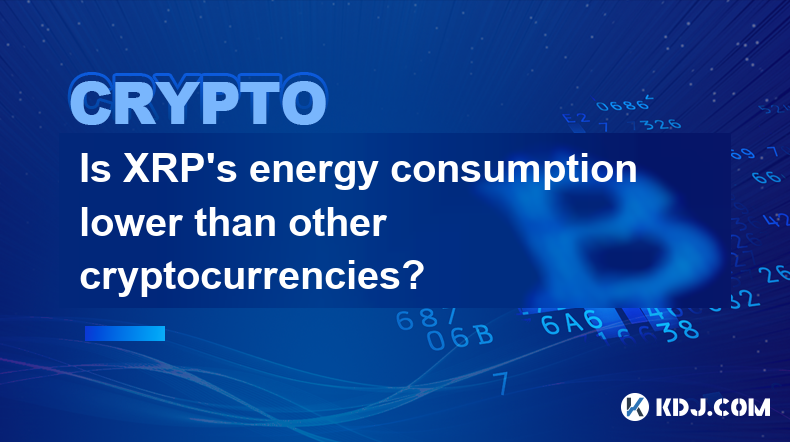-
 Bitcoin
Bitcoin $97,219.4672
1.63% -
 Ethereum
Ethereum $1,820.8950
1.13% -
 Tether USDt
Tether USDt $1.0001
0.02% -
 XRP
XRP $2.1327
-0.43% -
 BNB
BNB $602.3281
0.03% -
 Solana
Solana $147.7911
1.09% -
 USDC
USDC $0.9999
-0.01% -
 Dogecoin
Dogecoin $0.1725
1.12% -
 Cardano
Cardano $0.6706
0.13% -
 TRON
TRON $0.2489
1.41% -
 Sui
Sui $3.3512
1.53% -
 Chainlink
Chainlink $13.8526
1.44% -
 Avalanche
Avalanche $19.6299
-1.30% -
 UNUS SED LEO
UNUS SED LEO $8.7562
0.40% -
 Stellar
Stellar $0.2611
-0.23% -
 Shiba Inu
Shiba Inu $0.0...01279
1.26% -
 Toncoin
Toncoin $3.0266
0.40% -
 Hedera
Hedera $0.1765
0.37% -
 Bitcoin Cash
Bitcoin Cash $369.4993
2.08% -
 Hyperliquid
Hyperliquid $21.1995
1.68% -
 Litecoin
Litecoin $89.5955
4.54% -
 Polkadot
Polkadot $3.9568
0.63% -
 Dai
Dai $1.0002
0.01% -
 Monero
Monero $282.5473
-1.06% -
 Bitget Token
Bitget Token $4.2199
-1.10% -
 Ethena USDe
Ethena USDe $1.0007
0.03% -
 Pi
Pi $0.5835
0.91% -
 Pepe
Pepe $0.0...08266
4.18% -
 Bittensor
Bittensor $367.8815
0.84% -
 Uniswap
Uniswap $4.8814
-0.32%
Is XRP's energy consumption lower than other cryptocurrencies?
XRP's energy consumption is significantly lower than PoW cryptocurrencies like Bitcoin, primarily due to its energy-efficient RPCA consensus mechanism. However, precise quantification is difficult due to limited public data and varying calculation methodologies.
Mar 07, 2025 at 02:00 am

Key Points:
- XRP's energy consumption is significantly lower than proof-of-work (PoW) cryptocurrencies like Bitcoin and Ethereum (prior to the merge).
- XRP uses a consensus mechanism called the Ripple Protocol Consensus Algorithm (RPCA), which is far more energy-efficient than PoW.
- The energy consumption of XRP is difficult to quantify precisely due to a lack of publicly available, comprehensive data from Ripple.
- Comparisons are complex due to varying methodologies in energy consumption calculations.
- Factors beyond the consensus mechanism influence overall energy consumption.
Is XRP's energy consumption lower than other cryptocurrencies?
The question of XRP's energy consumption relative to other cryptocurrencies is a complex one. The answer is generally yes, compared to proof-of-work (PoW) cryptocurrencies, but a precise comparison requires careful consideration of several factors. Many believe that XRP's energy footprint is significantly smaller due to its fundamentally different consensus mechanism.
Bitcoin and Ethereum (before the merge to proof-of-stake), for example, rely on PoW. This involves a massive energy expenditure by miners competing to solve complex cryptographic puzzles to validate transactions and add new blocks to the blockchain. This process is notoriously energy-intensive.
In contrast, XRP utilizes the Ripple Protocol Consensus Algorithm (RPCA), a unique consensus mechanism designed for speed and efficiency. RPCA operates differently from PoW; it doesn't require the same level of computational power, thereby consuming considerably less energy. The network relies on a network of validators, rather than miners, who are selected based on their reputation and stake in the network. This makes the process significantly less energy-intensive.
However, obtaining precise figures for XRP's energy consumption is challenging. Unlike some cryptocurrencies, Ripple doesn't publicly release comprehensive data on its network's energy usage. This lack of transparency makes direct comparisons difficult. Moreover, even when data is available, the methodologies used to calculate energy consumption vary across studies, making direct comparisons problematic.
While RPCA is significantly more energy-efficient than PoW, it's crucial to remember that other factors contribute to a cryptocurrency's overall energy footprint. These include the energy used by the computers and infrastructure supporting the network, the energy used by users interacting with the network (e.g., running wallets and exchanges), and the energy used to manufacture and dispose of the hardware involved. These factors are not always easy to quantify.
Several studies have attempted to compare the energy consumption of different cryptocurrencies, but these often produce varying results due to different assumptions and methodologies. It's important to view these comparisons with a critical eye and consider the limitations of the data used. Many studies focus on PoW cryptocurrencies and may not offer detailed analysis of consensus mechanisms like RPCA.
Furthermore, the energy used to secure and validate transactions on the XRP ledger is significantly less than that of PoW blockchains. The validated transactions are confirmed within seconds, whereas the same process can take many minutes or even hours on a PoW system. This increased speed also contributes to a lower overall energy consumption.
The relative energy efficiency of XRP is a subject of ongoing discussion and research. While qualitative assessments suggest that it's significantly less energy-intensive than PoW systems, quantitative comparisons are hampered by a lack of comprehensive data and inconsistencies in measurement methodologies.
Frequently Asked Questions:
Q: How does XRP's energy consumption compare to other proof-of-stake (PoS) cryptocurrencies?
A: While both XRP and PoS cryptocurrencies are significantly more energy-efficient than PoW cryptocurrencies, direct comparisons are still challenging due to variations in network size, transaction volume, and the specifics of their consensus mechanisms. However, XRP's RPCA is designed for speed and efficiency, suggesting it could be among the more energy-efficient options within the PoS category, although more research is needed to confirm this.
Q: What are the environmental implications of XRP's energy consumption?
A: Because XRP's energy consumption is relatively low compared to PoW cryptocurrencies, its environmental impact is also expected to be considerably less. However, the exact environmental impact depends on the sources of energy used to power the network and related infrastructure. If the network relies primarily on renewable energy sources, its environmental impact is minimized further.
Q: Are there any ongoing efforts to reduce XRP's energy consumption further?
A: While the RPCA is already designed for efficiency, ongoing efforts in software optimization and network infrastructure improvements could potentially lead to further reductions in XRP's energy footprint. However, Ripple hasn't publicly disclosed specific initiatives in this area.
Q: Why is there a lack of publicly available data on XRP's energy consumption?
A: The reasons for the lack of public data on XRP's energy consumption are not entirely clear. It's possible that Ripple hasn't prioritized releasing this data or that the complexity of accurately measuring the energy consumption of a distributed network presents challenges. Greater transparency in this area would benefit the wider community.
Q: Does the energy consumption of XRP vary over time?
A: The energy consumption of XRP could fluctuate depending on factors like network activity (transaction volume) and the efficiency of the network infrastructure. However, due to the lack of publicly available data, it's difficult to assess these variations over time.
Disclaimer:info@kdj.com
The information provided is not trading advice. kdj.com does not assume any responsibility for any investments made based on the information provided in this article. Cryptocurrencies are highly volatile and it is highly recommended that you invest with caution after thorough research!
If you believe that the content used on this website infringes your copyright, please contact us immediately (info@kdj.com) and we will delete it promptly.
- Tron (TRX) is catching the market's attention with its current price of $0.244, holding steady above its key support level of $0.24
- 2025-05-08 06:45:13
- Bitcoin Could Be Getting Closer to Having a Place at the Government Table
- 2025-05-08 06:45:13
- Don't Miss BTFD at $0.0002—Next Crypto To Explode with 8900% ROI as PENGU Goes Walmart and SNEK Gets Global!
- 2025-05-08 06:40:13
- US Large-Cap Sustainable Funds Have Lost 5.93% of Their Value Year-to-Date
- 2025-05-08 06:40:13
- Shiba Inu (SHIB) Burn Rate Drops by 87%, Only 320814 Tokens Destroyed Today
- 2025-05-08 06:35:14
- Quant (QNT) Price Surged Past $88 as Investors Bought the Dip
- 2025-05-08 06:35:14
Related knowledge

Is Ethereum Layer2 fee low? How to use it cheaper?
May 08,2025 at 03:56am
The question of whether Ethereum Layer 2 solutions offer lower fees and how to use them more economically is a topic of great interest within the cryptocurrency community. Ethereum's Layer 2 solutions have been developed to address the high transaction fees and scalability issues associated with the main Ethereum network. In this article, we will delve ...

How to calculate Ethereum network fee? How to reduce transaction costs?
May 08,2025 at 02:15am
Understanding and managing Ethereum network fees is crucial for anyone involved in transactions on the Ethereum blockchain. The network fee, also known as gas fee, is the amount of Ether (ETH) required to successfully conduct a transaction or execute a smart contract on the Ethereum network. Calculating these fees and finding ways to reduce them can sig...

What is Ethereum Gas Fee? How to optimize Gas Fee to save costs?
May 08,2025 at 03:43am
Ethereum gas fees are a crucial aspect of interacting with the Ethereum blockchain. Understanding and optimizing these fees can significantly impact the cost-effectiveness of transactions and smart contract interactions. In this article, we will delve into what Ethereum gas fees are, how they are calculated, and provide detailed strategies for optimizin...

How to perform MOVE cross-chain transfer? What to do if the gas fee is too high?
May 07,2025 at 08:03pm
Introduction to MOVE Cross-Chain TransferCross-chain transfers have become an essential part of the cryptocurrency ecosystem, allowing users to move assets between different blockchain networks. One of the popular protocols for achieving this is the MOVE cross-chain transfer. This article will guide you through the process of performing a MOVE cross-cha...

How is the DYDX liquidation price calculated? How is the forced liquidation mechanism?
May 08,2025 at 06:49am
The DYDX liquidation price and the forced liquidation mechanism are crucial aspects of trading on the dYdX platform, a decentralized exchange that allows users to trade perpetual contracts. Understanding these concepts is essential for managing risk and maximizing potential returns. In this article, we will delve into the details of how the DYDX liquida...

Does DYDX support cross-chain? Is the transfer speed fast?
May 07,2025 at 05:56pm
Introduction to DYDXDYDX is a leading decentralized exchange (DEX) that primarily operates on the Ethereum blockchain. It is known for its advanced trading features, including perpetual contracts and margin trading. A common question among users is whether DYDX supports cross-chain functionality and how fast the transfer speeds are. In this article, we ...

Is Ethereum Layer2 fee low? How to use it cheaper?
May 08,2025 at 03:56am
The question of whether Ethereum Layer 2 solutions offer lower fees and how to use them more economically is a topic of great interest within the cryptocurrency community. Ethereum's Layer 2 solutions have been developed to address the high transaction fees and scalability issues associated with the main Ethereum network. In this article, we will delve ...

How to calculate Ethereum network fee? How to reduce transaction costs?
May 08,2025 at 02:15am
Understanding and managing Ethereum network fees is crucial for anyone involved in transactions on the Ethereum blockchain. The network fee, also known as gas fee, is the amount of Ether (ETH) required to successfully conduct a transaction or execute a smart contract on the Ethereum network. Calculating these fees and finding ways to reduce them can sig...

What is Ethereum Gas Fee? How to optimize Gas Fee to save costs?
May 08,2025 at 03:43am
Ethereum gas fees are a crucial aspect of interacting with the Ethereum blockchain. Understanding and optimizing these fees can significantly impact the cost-effectiveness of transactions and smart contract interactions. In this article, we will delve into what Ethereum gas fees are, how they are calculated, and provide detailed strategies for optimizin...

How to perform MOVE cross-chain transfer? What to do if the gas fee is too high?
May 07,2025 at 08:03pm
Introduction to MOVE Cross-Chain TransferCross-chain transfers have become an essential part of the cryptocurrency ecosystem, allowing users to move assets between different blockchain networks. One of the popular protocols for achieving this is the MOVE cross-chain transfer. This article will guide you through the process of performing a MOVE cross-cha...

How is the DYDX liquidation price calculated? How is the forced liquidation mechanism?
May 08,2025 at 06:49am
The DYDX liquidation price and the forced liquidation mechanism are crucial aspects of trading on the dYdX platform, a decentralized exchange that allows users to trade perpetual contracts. Understanding these concepts is essential for managing risk and maximizing potential returns. In this article, we will delve into the details of how the DYDX liquida...

Does DYDX support cross-chain? Is the transfer speed fast?
May 07,2025 at 05:56pm
Introduction to DYDXDYDX is a leading decentralized exchange (DEX) that primarily operates on the Ethereum blockchain. It is known for its advanced trading features, including perpetual contracts and margin trading. A common question among users is whether DYDX supports cross-chain functionality and how fast the transfer speeds are. In this article, we ...
See all articles





















































































